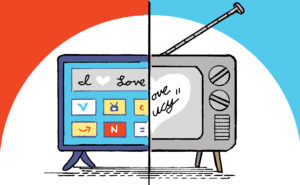The ad industry’s efforts to create universal measurement standards for gaming environments just took a major leap forward.
Tuesday, the IAB, in collaboration with the IAB Tech Lab and the Media Rating Council (MRC), released its first update to in-game ad measurement standards since 2009.
The new standards reexamine the metrics for counting a valid in-game ad impression and add criteria for measuring ad placements in 3D and virtual environments. They also align in-game measurement with display and video standards for more consistent cross-channel measurement.
The new standards are a long-overdue update to the outdated standards from 2009, said IAB Experience Center Vice President Zoe Soon. The MRC had ceased accrediting companies according to the 2009 standards because they were so outdated, which demonstrated a pressing need to draft new standards, she added.
“Traditional digital media advertising was historically more approachable, and [the new standards] will make in-game advertising more translatable for other media buyers, which will ultimately inspire more brands to enter the space,” said PepsiCo’s head of gaming and esports Paul Mascali. The brand was among the participants in the IAB working group for drafting the new standards.
What counts as an impression?
One of the major updates is the revamped in-game impression metric, which borrows from the MRC’s Viewable Impression Measurement Guidelines.
Under the IAB’s 2009 standards, an in-game ad impression was only counted after 10 continuous seconds of exposure to campaign creative.
Now, a static or display ad impression is counted if 50% (or more) of the pixels in the ad were in focus in the viewable space of the display device for a duration of at least one continuous second post-ad render.
Dynamic or video ads also require at least 50% of the ads pixels to be in focus in the display device view, but the duration requirement is upped to two continuous seconds. Any two unduplicated, continuous seconds of ad content (not just the first two seconds of the ad, for example) will satisfy the requirement.
In both cases, the viewable pixel requirement must be met before the time requirement goes into effect.
Other key updates
Although the new video game standards align to display and video viewability measurement, 3D and virtual reality environments mean factors like viewing angle and lighting, as well as any obstructions caused by other game elements, must be taken into consideration for ad measurement.
For example, the new standards specify that an angle of no greater than 55 degrees relative to the player’s perspective is recommended for a valid impression to be counted. And an in-game ad is considered occluded (or blocked from view) if less than 50% of the creative is visible.
Viewability standards will also apply to digital product placements and branded in-game assets. For example, if an apparel company creates a wearable digital pair of shoes for in-game characters, it makes sense to only count an impression for that asset if the brand’s logo is visible, Soon said.
These viewability concerns will be especially important to consider in metaverse environments years from now, Soon added.
Gaming’s moment in the sun
With the recent rise of in-game ad tech companies like Anzu and Frameplay, the advertising industry is waking up to the opportunities for reaching underserved audiences through video games, Soon said.
With 227 million gamers in the US and more than 3 billion worldwide, video games enjoy broad appeal across a variety of demographics and age groups.
“We’re not going to be able to ignore this shift of consumer time and attention to this major media channel,” Soon said.
The new standards will make it easier for the buy side and sell side to communicate the opportunity and return on investment of in-game ads, which should make it easier for marketers to get buy-in from CMOs and other key decision-makers, PepsiCo’s Mascali said.
Because “standardization offers a more holistic picture of what the investment actually entails,” Mascali said, a greater level of transparency will be especially useful for advertisers who are new to this emerging market.
Increased standardization should also enable more turnkey programmatic advertising opportunities in the gaming space, according to Mascali. In-game programmatic advertising remains scarce, though updated standards may give the industry a needed boost toward automating the emerging video game advertising market.














